 The Unacknowledged Trauma
The Unacknowledged Trauma
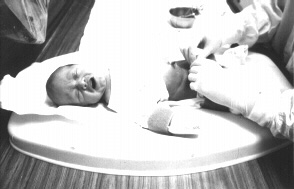 People who have known me for a long time know that my position on the issue of infant circumcision has always been one of disgust and outrage - disgust at the medical profession for promoting it and profiting from it, and outrage that such a barbaric practice is allowed to exist at all, much less continue to be perpetuated, here in the United States or anywhere else, for any reason, be it religious, cultural, or pseudo-medical. In September 2002, following the publication of a blurb in Fit Pregnancy Magazine referencing the NEJM study and characterizing circumcision as a “kind cut,” I sat down and dashed off the following letter to the editors to express my disappointment at their lack of balanced coverage and their ignorance in an important area of infant health.
People who have known me for a long time know that my position on the issue of infant circumcision has always been one of disgust and outrage - disgust at the medical profession for promoting it and profiting from it, and outrage that such a barbaric practice is allowed to exist at all, much less continue to be perpetuated, here in the United States or anywhere else, for any reason, be it religious, cultural, or pseudo-medical. In September 2002, following the publication of a blurb in Fit Pregnancy Magazine referencing the NEJM study and characterizing circumcision as a “kind cut,” I sat down and dashed off the following letter to the editors to express my disappointment at their lack of balanced coverage and their ignorance in an important area of infant health.
I have made a few changes since this was originally mailed in order to fix some spelling and grammatical errors, and I have corrected the url’s for weblinks that have since moved or changed, but this letter is otherwise presented essentially intact, as originally written in one sitting in 2002. I make no apologies for my stance on this issue, and suggest that anyone who has a problem with it read through the entire letter and visit the links at the end before sending me a flaming e-mail. It might open your eyes.
(Special thanks to Rosemary Romberg for the use of the images on this page)
I am very disappointed with your magazine’s reportage of the New England Journal of Medicine study results as characterizing a “kind cut.” Circumcision is not a “kind cut” - it is an extremely painful, medically unnecessary procedure whose routine performance has its roots in the anti-masturbation hysteria of the late nineteenth century. Over the years, various rationales for the procedure have been put forth in an effort to give it legitimacy, beginning with the claim that masturbation - which circumcision renders more difficult and less pleasurable - caused such ills as insanity and leprosy, and continuing up until the present day with claims regarding scary-sounding prospects such as sexually transmitted diseases and cancer. Your promotion of such an egregiously flawed study as providing evidence of a supposed prophylactic effect of circumcision is both insupportable and irresponsible.
The cervical cancer/circumcision link is an old one that has been rehashed over and over again throughout the years in an attempt to justify routine male infant circumcision, or R.I.C. R.I.C., usually performed behind closed doors, out of view of the parents, is a practice which has become a multimillion dollar industry in this country. A recent (December 2001) eleventh-hour reinstatement of Medicaid funding for circumcision in North Carolina, done at the behest of angry doctors who stood to lose thousands of dollars in revenue, is proof of the procedure’s profit-making potential in a country with privatized health care, and demonstrates the need of those who perform and/or support the practice to legitimize it. Many who perform circumcisions, despite the obvious pain and trauma inflicted by it and the pursuant need to restrain and immobilize babies by tying down their arms and legs, have even come to believe in its supposedly inherent benefits - alleged praises that have been sung so loudly and so repeatedly that they have become a tired refrain:
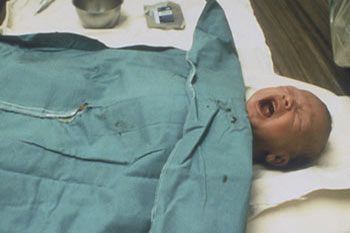 “Circumcision reduces the rate of HPV in female partners”
“Circumcision reduces the rate of HPV in female partners”
In reality, most women in the United States who are sexually active and have had multiple sexual partners are probably infected with or have been infected with human papillomavirus, or HPV. It is the most common sexually transmitted disease in America, albeit one of the least acknowledged, and it is not something that circumcision is going to prevent or hinder. In the United States some tens of millions are infected with HPV, despite the fact that the clear majority of sexually active, American-born males are circumcised.
“Circumcision helps prevent cervical cancer in women”
This link was first suggested in a 1954 study by Ernst L. Wynder et al, who based their conclusions on a flawed, non-representative study sample of Jewish women. The claim that circumcision acts to help prevent the contraction of cervical cancer in a man’s female sexual partners was refuted long ago in a number of important studies. Smegma, a substance secreted under the foreskin which has been portrayed as a cancer-causing agent, is in reality non-carcinogenic and actually has antibacterial and antiviral properties. In 1996, the American Cancer Society informed the American Academy of Pediatrics that “research suggesting a pattern in the circumcision status of partners of women with cervical cancer is methodologically flawed, outdated, and has not been taken seriously in the medical community for decades.” As with all cancers, regular medical check-ups and good health practices are key to prevention.
“Circumcision makes the penis easier to clean”
Left alone, the penis requires no special care until the foreskin becomes retractable, and at that point cleaning is a very simple matter, much easier in fact, than cleaning the female genitalia. There is no logic to cutting off body parts as a “replacement” for good hygienic practices, and we don’t cut off other body parts that truly do take some effort to clean.
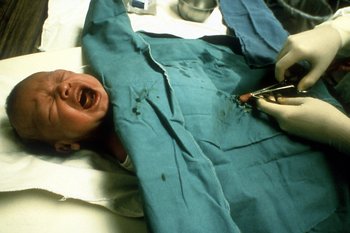 “Circumcised penises are less prone to disease and infection”
“Circumcised penises are less prone to disease and infection”
This assertion is nonsensical. The circumcision leaves an open, gaping wound that must try to heal itself while under constant exposure to the hazards of urine, feces, and germs and other agents in the environment. Left alone, none of these poses any threat - potentially harmful agents in the baby’s feces will not gain any entrance, and urine is sterile outside the body. There will not be any large, damaged area of tissue through which microbes can so easily enter the body. In truth, intact penises are not more susceptible to infection, and they require no specialized care - only proper, ordinary hygiene. Circumcised penises, by contrast, must be carefully tended to prevent infection until the circumcision wound is able to heal itself.
“Circumcision prevents penile cancer”
The rate of penile cancer for intact men is less than 1 in 100,000 (the American Cancer Society gives the figure as 1 in 200,000), and the cancer affects older men, well advanced in years. There is also no guarantee that the circumcised man will not develop penile cancer, and there are numerous cases of this which have been documented in the medical literature. In fact, some countries such as Denmark, where circumcision is rare, have lower rates of penile cancer than circumcising America. The claim is unfounded, and proper hygiene and care - a simple matter - can greatly reduce the chances of contracting this and other forms of cancer, a fact that has been well known in the medical community for years. Furthermore, the American Cancer Society clearly discourages the promotion of circumcision as a “preventive” measure for cancer: “. . .the practice of circumcision is strongly associated with socio-ethnic factors which in turn are associated with lessened risk. The consensus among studies that have taken these other factors into account is that circumcision is not of value in preventing cancer of the penis. It is important that the issue of circumcision not distract the public’s attention from avoiding known penile cancer risk factors.” This statement is readily accessible on the American Cancer Society’s website.
It is worth noting that a man’s risk of contracting breast cancer is higher than his chance of contracting penile cancer.
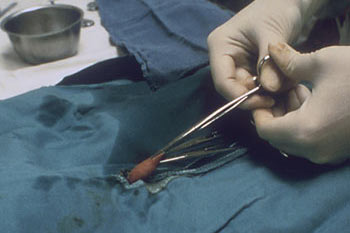 “Circumcision prevents phimosis”
“Circumcision prevents phimosis”
Phimosis, a condition in which the foreskin becomes difficult or impossible to retract, is relatively rare, and circumcision in these cases is usually not required. There are many other, far more conservative treatments available for dealing with phimosis than circumcision. Premature retraction of the foreskin - attempting to force it back before its natural separation from the glans - is a common cause of this condition, as it leads to the forming of protective adhesions which can cause phimosis later on. It should be noted that the foreskin is not supposed to be retractable at birth or usually during the first few years of life, and amputating it to prevent a condition that is very unlikely to appear anyway, and certainly rare when the penis is left alone, cannot be justified.
“Circumcision decreases the chance of urinary tract infections”
A scary-sounding prospect to parents, but one whose probability of occurrence is only about 1 in 100 and which can easily be treated and cleared up with antibiotics. We don’t cut off any other body parts to prevent infection, and girls, who get many more UTIs than boys do, are treated with antibiotics instead of by genital amputation.
And now there’s the newest argument, that the toughened, sexually desensitized skin left on the glans (head) and shaft of the penis as a result of the operation helps reduce the spread of STD’s, particularly AIDS/HIV. This last claim is at least as absurd as its predecessors: Africa has a high circumcision rate, and the highest AIDS/HIV rate in the world. America, with the highest circumcision rate in the West (and the only country in the world where circumcisions are routinely performed for non-religious reasons), also has the highest STD rate in the West. Attempting to draw a connection between circumcision status and sexually transmitted diseases is so clearly misguided that it begs the question of why some researchers are trying so hard to tout this as another “rationale” for infant circumcision. The only real way to prevent contracting and spreading sexually transmitted diseases is to adopt responsible sexual practices. Connecting circumcision status to the AIDS virus, perhaps the scariest of all sexually transmitted diseases, is a clever and obvious attempt to advance a woefully faulty and ultimately baseless hypothesis as incontestable fact.
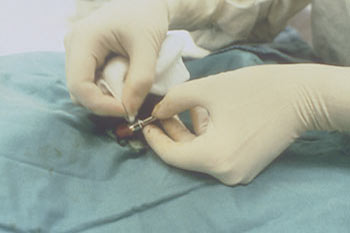 The American public has been sold on the idea of male circumcision for so long, and so schooled in the belief that the intact (“uncircumcised”) penis is “ugly” or “nasty” or even “dangerous,” that it has come to buy into all the myths and believe all the rhetoric about it. The practice of circumcision has become so well established in this country that it has come to have its own impetus, and many people have come to look at it as simply part of the birthing process, as simple and as fundamental as cutting the umbilical cord. There are, however, indications that this attitude is slowly changing, and the American neonatal circumcision rate has dropped from around 90% in the late 1970s/early 1980s to about 60% today. The need to provide justification for the procedure is thus becoming more urgent as the various rationales for it are debunked.
The American public has been sold on the idea of male circumcision for so long, and so schooled in the belief that the intact (“uncircumcised”) penis is “ugly” or “nasty” or even “dangerous,” that it has come to buy into all the myths and believe all the rhetoric about it. The practice of circumcision has become so well established in this country that it has come to have its own impetus, and many people have come to look at it as simply part of the birthing process, as simple and as fundamental as cutting the umbilical cord. There are, however, indications that this attitude is slowly changing, and the American neonatal circumcision rate has dropped from around 90% in the late 1970s/early 1980s to about 60% today. The need to provide justification for the procedure is thus becoming more urgent as the various rationales for it are debunked.
When you come right down to it, any medical procedure can be viewed as providing some benefit, even if it is a spurious one. Having one’s fingernails removed confers the benefit of never having to clean under them, and of making the ends of the fingers easier to clean, but do those benefits outweigh the benefits of keeping the fingers intact? I doubt that many people would answer “yes” to that question. Yet that is exactly the type of rationale, and one of the very same arguments - cleanliness - upon which people predicate claims that circumcision confers benefits upon a child. But such is not the case - the extreme pain and suffering involved, and the definite and demonstrable physical, protective, and sexual losses that are the inevitable end result simply cannot counterbalance the presumed “benefits” of the procedure. Even the American Academy of Pediatrics, in its “revised” 1999 statement on circumcision, has clearly admitted this and does not recommend the procedure.
Over the years, the many arguments used to promote infant circumcision have found their way into popular literature as diverse as John Harvey Kellogg’s Treatment for Self-Abuse and Its Effects, Plain Facts for Old and Young (1888), the “Happy Hooker” series of books by Xaviera Hollander (1970s), and present-day books on parenting and childcare (The Portable Pediatrician for Parents, Pregnancy for Dummies, etc.). Because of the widespread misinformation about the foreskin and its manifold functions, ignorance of routine circumcision’s “medical” origins as a “cure” for masturbation (which indicates the foreskin’s erogenous value), and the routine nature of the procedure in modern-day America, the very real risks and complications of the surgery are either downplayed or ignored completely. In the United States, some 200 deaths per year occur from complications of circumcision operations, most of them attributed to other causes. No national medical organization in the world recommends routine, non-religious infant circumcision, and all which have released recent statements about it have either not recommended it or condemned the practice. The Canadian Paediatric Association, in a February 2002 memo to its members in Saskatchewan (which has the highest neonatal circumcision rate in Canada - 27.6%), has even gone so far as to instruct its members to “respectfully decline to perform the procedure.”
Circumcision is a barbaric, medically unjustifiable act of violence, brutally inflicted on a helpless, unconsenting child, which leaves him shrieking in agonized pain and terror. In the midst all the furor and debate over the procedure’s alleged medical benefits, people tend to overlook five very important considerations:
 Mainstream media such as your magazine have a habit of feeding to the public only the types of information it is most prepared to hear. Even in the purportedly “unbiased” articles, there is always mention made of circumcision’s alleged benefits, but rarely is there any attempt to point out the very real sexual losses and deficiencies engendered by the procedure. As circumcision is such a non-issue for most people in America, they are prepared to accept and embrace the erroneous belief that the human foreskin serves no useful purpose, and is therefore somehow a “redundant flap of tissue” that harbors dangerous pathogens. By associating the prepuce with such frightening-sounding, yet unlikely, possibilities as urinary tract infections and penile cancer, and in particular with non-related or only tangentially-related conditions such as cervical cancer and AIDS, the circumcision industry manages to capitalize on people’s fears of their own future health to promote the continuation of a practice which is neither in a child’s best interest nor ethically defensible. The only person who has the true ethical right to make a decision about the removal of normal, healthy tissue from his body is the owner of that body, upon reaching a sufficient level of maturity to make that decision for himself.
Mainstream media such as your magazine have a habit of feeding to the public only the types of information it is most prepared to hear. Even in the purportedly “unbiased” articles, there is always mention made of circumcision’s alleged benefits, but rarely is there any attempt to point out the very real sexual losses and deficiencies engendered by the procedure. As circumcision is such a non-issue for most people in America, they are prepared to accept and embrace the erroneous belief that the human foreskin serves no useful purpose, and is therefore somehow a “redundant flap of tissue” that harbors dangerous pathogens. By associating the prepuce with such frightening-sounding, yet unlikely, possibilities as urinary tract infections and penile cancer, and in particular with non-related or only tangentially-related conditions such as cervical cancer and AIDS, the circumcision industry manages to capitalize on people’s fears of their own future health to promote the continuation of a practice which is neither in a child’s best interest nor ethically defensible. The only person who has the true ethical right to make a decision about the removal of normal, healthy tissue from his body is the owner of that body, upon reaching a sufficient level of maturity to make that decision for himself.
As a pregnancy magazine, it is your responsibility to inform parents and parents-to-be about how procedures will or will not benefit their children, not about the ways in which a given procedure will supposedly benefit a future someone else who may in fact never materialize. You have a duty to your readers to challenge, and, if necessary, to refute established ideas about pregnancy and childcare when they stand in such sharp opposition to a child’s well-being. Circumcision transforms the penis from one of the most sensitive parts of the body into one of the least sensitive. You would be doing your readers a favor if your editors and staff would run a article detailing the benefits of having a foreskin and the purposes the prepuce serves, to give readers the information they need to have in order to make the decisions for their child that are really in his best interests. Mothering magazine ran such an article five years ago (available at http://www.mothersagainstcirc.org/ fleiss.html), reporting on the “other side” of circumcision, the side of the issue that is very rarely given voice in mainstream media publications such as yours. In addition, at http://www.cirp.org/pages/anat/ you will find information and illustrations detailing the normal functioning of the penis and discussing the valuable role the foreskin plays during sexual intercourse - and, incidentally, how your decision NOT to circumcise your baby boy may someday benefit the woman in his life.
I hope you will consider this important information carefully.
Sincerely,
Peter Orozco
See also the following websites and weblinks:
http://www.cirp.org
The most comprehensive collection of circumcision-related articles and studies available anywhere, including hundreds of studies indicating that circumcision is not advisable. These studies get very little acknowledgment from the popular press. We instead hear only about those studies whose results appear to support and provide fodder for our preexisting beliefs and prejudices, even when, as in the case of the NEJM article, they employ highly questionable means of data analysis and questionable methodology in an apparent attempt to attain a result that will get their study published and reported in the mass media.
https://www.circumstitions.com/Cancer-cervNEJM.html
http://nocirc.org/publish/nocirc_6-02.pdf
Two penetrating critiques of the NEJM “study,” highlighting its many methodological flaws and the authors’ questionable interpretation of their data. Despite the study’s obvious shortcomings, the impression has been given in the popular media that its alleged results are both supportable and applicable to the United States (even though there were NO Americans in the pool of study subjects).
http://www.noharmm.org/separated.htm
“Separated at Birth,” an article published in Men’s Health magazine in 1998.
http://www.cirp.org/library/disease/cancer/
Read about the historical association of circumcision with cervical cancer and penile cancer.
http://www.cirp.org/library/anatomy/taylor/
Read a landmark study of the human prepuce. This study was refused publication by medical journals in the United States and was ultimately published in the British Journal of Urology.
http://www.sexuallymutilatedchild.org
The late John Erickson’s outstanding website on male genital mutilation, known euphemistically as “male circumcision.”
http://www.sexuallymutilatedchild.org/f4sale.htm
See how severed infant foreskins are used for profit in the pharmaceutical and medical communities.
http://www.cirp.org/library/general/gellis1/
“It is an uncontestable fact at this point that there are more deaths from complications of circumcision than from cancer of the penis.”
http://research.cirp.org/index-e.html
Read about the foreskin’s “ridged band” of sensory tissue.
http://www.circumcisionquotes.com
See what some nurses and parents have had to say about circumcision. Read about routine circumcision’s historical origins in quack medicine.
http://www.noharmm.org/bestinterest.htm
A “fact sheet” of statistics regarding male circumcision.
http://www.hollyfeld.org/~fgm/intro/mgmfgm.html
Note the similarities in excuses given for male and female circumcision.
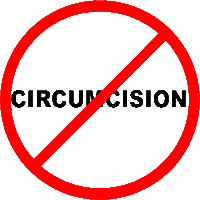
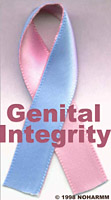
https://www.cancer.org/
The website for the American Cancer Society.
Jewish issues are dealt with at these and other sites:
https://circumcision.org/
http://www.noharmm.org/pollack.htm
http://www.fathermag.com/health/circ/jews-circ/ [archived]
https://www.circumstitions.com/Jewish.html
http://www.noharmm.org/
http://www.mothersagainstcirc.org/
https://www.doctorsopposingcircumcision.org
http://www.webmagician.com/pubservice/real_truth.html
http://www.circumstitions.com
“From a purely medical standpoint, circumcision is justified only when performed to correct a pathological condition, never to remove normal healthy tissue, and the health benefits must outweigh the risks involved. From the standpoint of medical ethics, experimental and clinical procedures are not to be performed on a person who does not benefit from them.“The way defenders of circumcision try to argue around these objections is to expand the concepts of benefit and beneficiary to include a future class of unknown persons who may or may not develop a clinical condition. Within this class are not only the adult the infant may become but women or men with whom the adult may have intercourse. Yet it is impossible to predict whether any specific normal, healthy newborn or infant will develop any future clinical condition that may merit a medical circumcision or, by remaining whole and then failing to use proper hygiene, may contribute to a medical condition in another person.
“From the standpoint of human rights, every newborn, infant, and child has a right to be free from the compelled donation of body parts or tissue - in this case, the foreskin - even if such might benefit a third party in the future.”
-- Prescott, James W., Marilyn Fayre Milos, and George C. Denniston, “Circumcision: Human Rights and Ethical Medical Practice.” The Humanist, Volume 59, Number 3, Pages 45-46, May-June 1999.